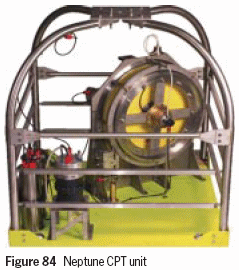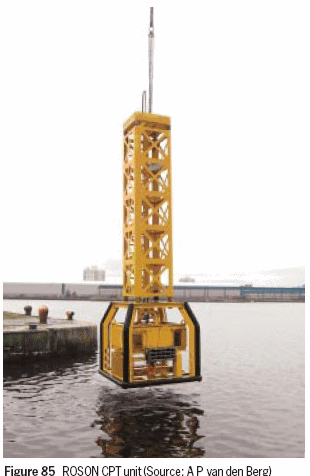Buy the Book
Published By Lankelma
Lankelma is the foremost contractor for onshore in-situ soil testing in the UK. An acknowledged
specialist in CPT, Lankelma also offers a worldwide consultancy and training service.
A.P. van den Berg develops, designs and manufactures geotechnical and environmental soil
investigation equipment for onshore and offshore applications. Specialists in CPT systems and equipment.
Gardline
Gardline Geosciences offers worldwide marine geotechnics, in-house consutancy and services with marine
investigations ranging from nearshore to full ocean depth (down to 3000m).
About the Author
Hans Brouwer studied civil engineering at Delft University in The Netherlands. He has
worked as a part-time lecturer at Amsterdam Polytechnic and was senior partner in a structural
engineering consultancy. He has written a standard textbook in Dutch about the design of
building foundations. He now lives in England where he writes technical textbooks in
English, hopefully to reach a bigger readership.
Quick Links:
Chapter 9
Near-shore marine testing
Seabed frames
SEABED FRAMES 9.4 | |
 | Neptune CPT unit (Figure 84)
♦ 2 cm2 detachable cone, 50 MPa push capability
♦ Up to 10 m penetration from coiled rod
♦ Compact and easily deployed subsea frame
♦ Real-time control and display
♦ Single coaxial connection for power and data
♦ Automatic safety cut-outs
♦ Low maintenance, low consumable use
♦ Easy to operate WindowsTM based PC control
♦ Data comparable to 10 cm2 systems |
| |
Technical specification
| |
| | Dimensions | 1.8m (l) x 1.8m (w) x 2m (h) |
| | Weight in ari | 1500 kg approx |
| | Weight in sea water | 1200 kg approx |
| | Thrust capacity | 1000 kg (approx 10kN, 50 MPa) |
| | Max penetration | 10m |
| | Depth rating | 3000m |
| | Cone type | Detachable, analogue subtraction |
| | Cone sensors | Tip, sleeve friction and inclination |
| | Optional sensors | Piezo - ranges to suit |
| | Cone tip area | 2cm2 |
| | Cone sleeve area | 30cm2 |
| | Penetration speed | 2cm / sec ± 10% |
| | Retract speed | 5cm / sec approx |
| | Power requirement | 240V AC single-phase 50/60Hz |
| | Umbilical voltage | 600V AC |
| | Telemetry link | FSK |
| | Tip accuracy | >100 kPa |
| | Sleeve accuracy | >10 kPa |
| | Inclination accuracy | > 1° |
| | Cone data rate | 20Hz |
| | Frame sensors | Altimeters, tilt, pressure |
| | Frame sensor data rate | 1Hz |
| | Operating system
| WindowsTM 98 and NT compatible
|
|
| | ROSON seabed CPT system
Lowered to the seabed or river bed from land,
a vessel or a platform, this subsea frame
(Figure 85) is linked to its base by an umbilical
cable or a wireless acoustic data transmission
link.
The CPT string is pushed into the soil by means
of two friction wheels, driven by electrical
motors. The friction wheels are pressed
against each other by means of a hydraulic
cylinder, thus clamping the CPT string between
them. This allows for adjustment of the force
applied to the CPT string. The maximum
penetration is around 20 m, although in
specific conditions greater penetration may be
feasible. The height of the tower on top of the
unit is determined by the length of penetration.
|  |
| | There are two drive units available: - ROSON 40 kN, suitable for all cone sizes
- ROSON 100 kN, suitable for 5 and 10 cm2 cones.
Total system weights available include 4, 5, 10 and 20 tonne frames.
When using a 10 cm2 cone, the base area and weight of the unit can
be increased to 4 m2 and 5 tonnes respectively.
Using wireless transmission, full data sets are taken during each test in
exactly the same way as with a cable linked unit. Original files of data
are downloaded from the subsea memory module whenever the unit is
returned to its base.
|
<< Previous PageNext Page >>


